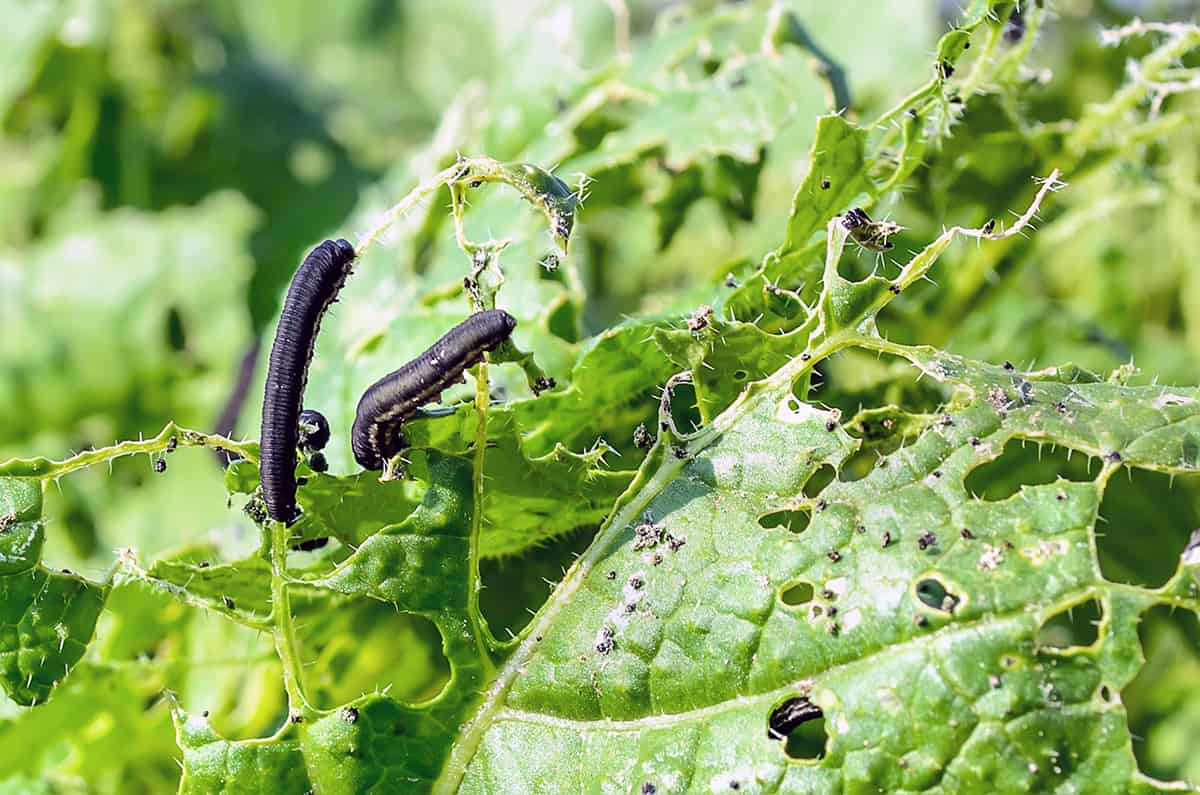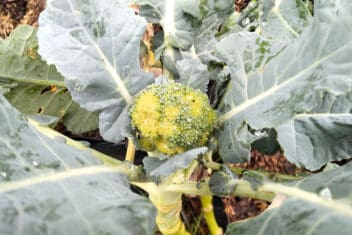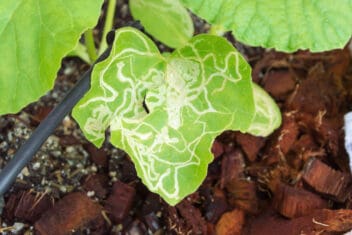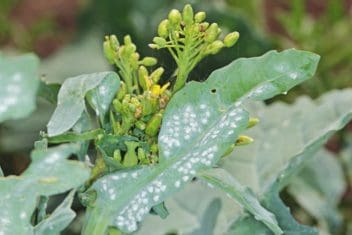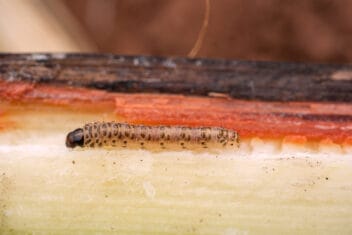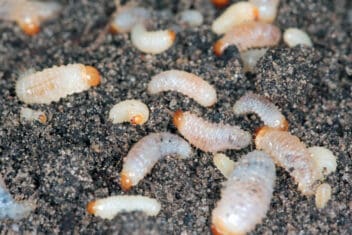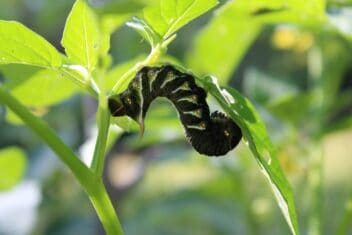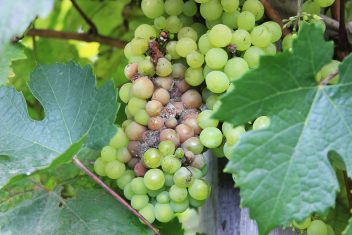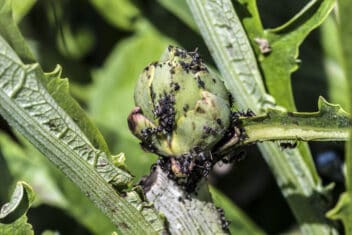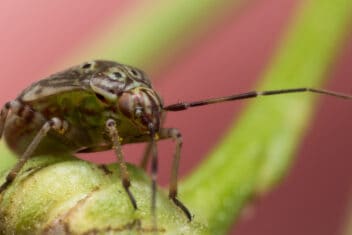Sawflies are pests that are related to wasps. They deposit eggs into plants that eventually hatch into larvae and eat away at your garden. These pests cause serious problems in large numbers, so learning how to spot and quickly control a sawfly infestation is key.
You rarely see adult sawflies; larvae are the real problem. They primarily infest trees, especially fruit trees like cherry, pear, and plum. While that’s great news for your vegetable plants, losing your fruit trees is a devastating prospect. Don’t let it happen to you.
What are Sawflies?
Sawflies are wasps, but they don’t look like the wasp you think of that has that scary stinger. Instead, sawflies look like fat-bodied flies with four wings instead of two, and – thank goodness – they can’t sting you.
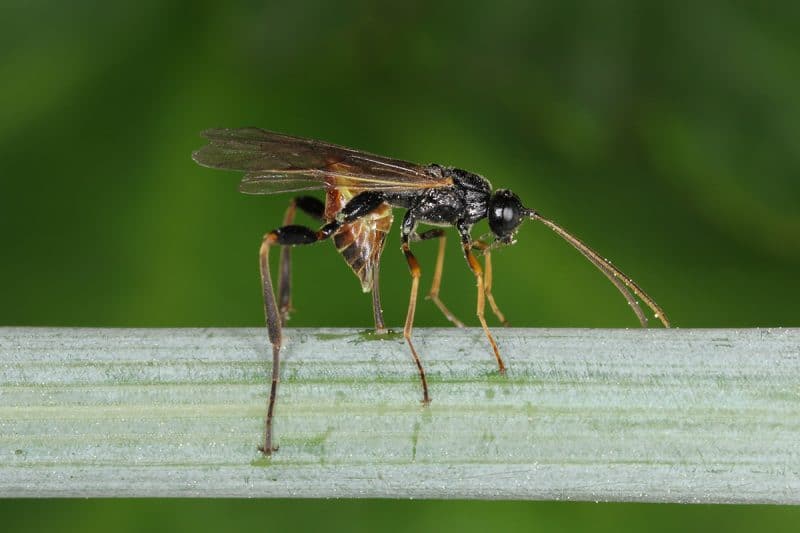
The adult stages aren’t the real problem; you want to avoid sawfly larvae. Sawfly larvae look like hairless caterpillars, and they feed on the foliage of many different plants. This is the difference between the adults and the larvae; when is the last time you saw a wasp chew on a leaf?
As I said, sawfly larvae look like caterpillars. You can identify the larvae because they have six or more pairs of legs on every segment of the abdomen. Caterpillars never have more than five pairs of prolegs.
Sawfly larvae infest many different types of trees and shrubs throughout the United States. You might find these pests on cereals, rapeseed, mountain ash, hawthorn, cotoneaster, cherry, plum, pear trees, and roses.
Sometimes, you’ll see them eating quince, azalea, oak, conifers, and shadbush, but it’s not as common.
How to Identify Sawflies
Take a close look at your plants. The larvae measure 1/2 inch long and are greenish-black, long, slim, and look like a hairless caterpillar. While they have legs, it’s hard to spot them underneath their body.
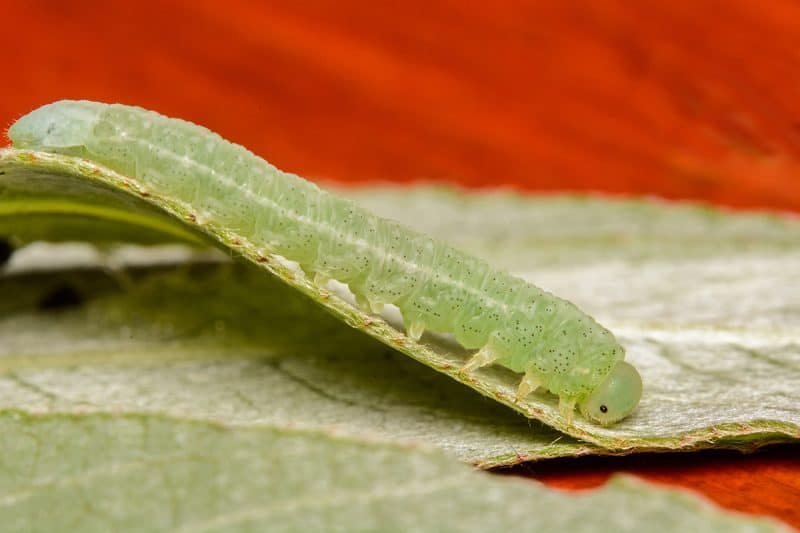
Gradually, the sawfly mature, and they start to change their looks based on the particular variety. The adults are 1/5 inch long and are black and yellow with four wings. These pests don’t sting, despite looking like wasps.
The Lifecycle of a Sawfly
Female sawflies have a saw-like egg-laying apparatus at the end of their abdomen. When it’s time, she lays eggs, making a small slit in the leaves or stems of a plant. The eggs are put into the slit, and when it’s time, they hatch and start to eat the plant matter. Eggs are laid in groups called pods.
Sawfly eggs take a week or longer to hatch, depending on the temperature. The development of the larvae takes less than one month, and then the pupae stage takes place in the soil. By July and August, the adults emerge, and before long, the adults lay eggs in the plants to create the second generation of pests.
It’s rare to see an adult sawfly because they don’t usually live longer than a week. They live long enough to lay eggs, but they’re not an active species in the garden. It’s rare for them to fly long distances; they fly only long enough to find the perfect spot to lay their eggs.
The Signs of a Sawfly Infestation
Sawfly larvae love to eat plants, so that’s where you see the signs of an infestation. These pests are serious and cause noticeable to severe destruction to the plants. The larvae leave holes or notches in the leaves, but many skeletonize the entire leaves, eating all of the tissue between the veins.
They can also chew through fruits.
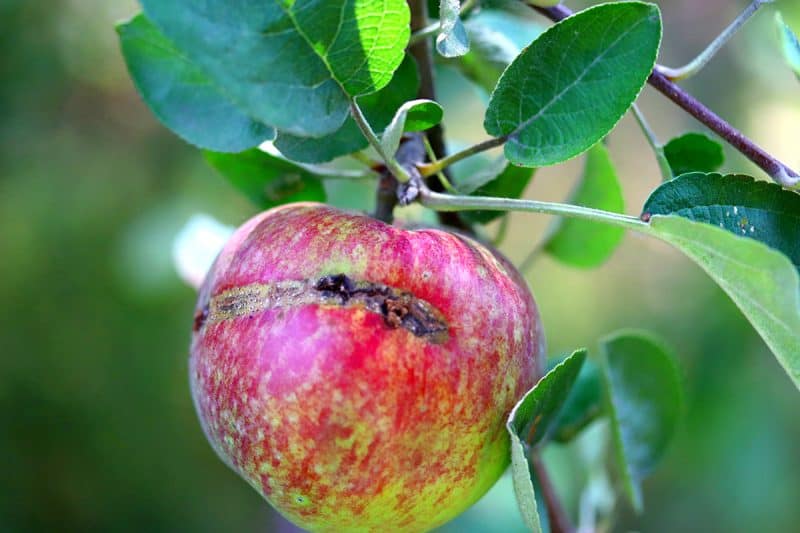
Some sawflies roll up the leaves or spin webs; this depends on the variety of sawfly you have in your garden.
A small infestation might only cause a bit of cosmetic damage, but a large infestation causes severe damage or kill entire trees. The larvae like to feed in groups, so it’s not uncommon for them to stick together on only a few branches. Only severe infestations cover the entire plant.
How to Prevent Sawflies in Your Garden
Sawflies lead to plenty of damage to your trees, so it’s important to use preventative measures to stop these pests from wreaking havoc on your plants. Here are a few tips to remember.
Clean Up Around Your Trees
Remove any debris around your trees that might give pests a place to overwinter. Sawflies overwinter in cocoons in the garden, so cleaning up this area is one simple trick to killing off the population.
Turn Over the Soil in the Winter
Another trick is to cultivate the soil to expose any pupae that overwinter in the soil. Turning over the soil exposes the cocoons they use to overwinter into the freezing temperatures and birds that love to feed on them. This trick is best done several times throughout the winter to work and kill off the larvae.
Keep Your Trees and Plants Healthy
Healthy plants are more likely to withstand any infestations. Sawflies target young trees and ones in poor health; these experience the most damage. Using good practices to keep your trees as healthy as possible is a huge deal. That way, if your trees end up with a sawfly infestation, it won’t destroy your plants.
How to Get Rid of Sawflies in Your Garden
Unless the defoliation is severe, control of sawflies is rarely needed. Instead, it’s best to protect new or stressed trees and plants to stop these pests from finding the trees. The larvae are the biggest problem, so that’s where you need to focus your control methods.
Hand Pick the Larvae
Sawfly larvae can be removed from infested trees by hand if they’re only on a few plants throughout your garden. This isn’t the most practical choice if you have a serious infestation, but it’s often the first step.
Prune Off Damaged Branches
Small infestations are often managed simply by removing the diseased branches. Use pruners to take off these branches and continue to use preventative measures. Watch to make sure the infestation stops after pruning before taking further action.
Release Beneficial Insects
Sawflies have a lot of natural enemies, so one of the best ways to get rid of sawflies is to release the beneficial insects that help to keep the sawfly population in check. A few options that you can release include predatory beetles and parasitic wasps.
However, if you go with this route, you cannot apply any broad-spectrum insecticides to your garden because they’ll damage and kill off the beneficial insects as well.
Use Food-Grade Diatomaceous Earth
One of the best methods for getting rid of sawfly larvae is to use food-grade diatomaceous earth. DE is made of tiny fossilized aquatic organisms. Under the microscope, DE looks like broken glass, so when pests crawl over this, it kills them. How?
Diatomaceous earth kills the larvae as they move over the powder because it cuts and shreds their outer layer. Best of all, DE contains no toxins, so it’s safe around pets and humans.
Apply Neem Oil
The next method for getting rid of sawfly larvae is to apply neem oil on your infected trees. Neem oil contains azadirachtin, and this organic insecticide attracts the insects then kills them. It works for a huge range of pests, but at the same time, it’s non-toxic to bees and other beneficial insects you want to keep in your garden.
Use a Commercial Insecticide
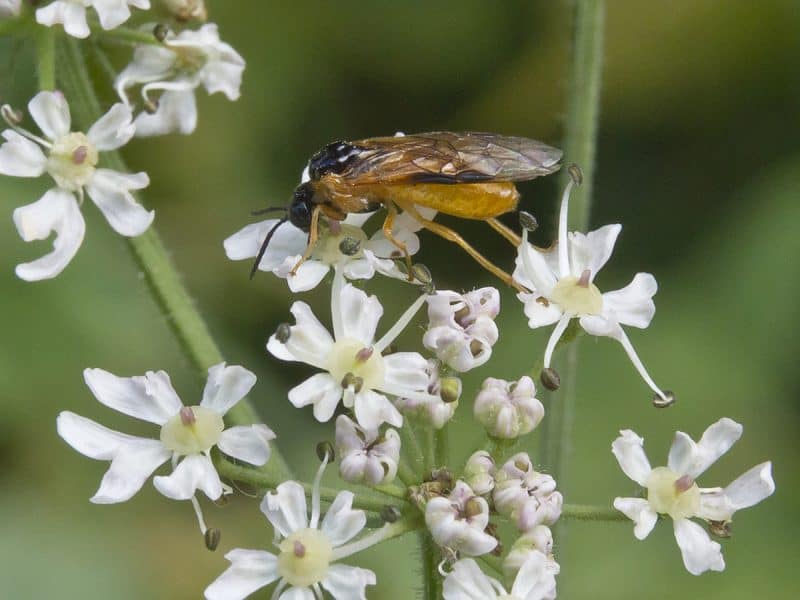
Typically, the last resort is to use an insecticide. Most gardeners should avoid this because many insecticides also kill beneficial insects that we want to keep in our gardens.
One option is to use a garden insect spray that uses spinosad as the main active ingredient. While spinosad is considered a new player in the insecticide world, evidence shows that it’s used in organic gardening because it’s safe yet effective.
Botanical insecticides should be the last resort. Synthetic chemicals have harmful side effects and take a long time to break down in the environment, but if sawflies are destroying all of your trees, it might be the only option you have.
Sawflies are one of the few pests that don’t cause major problems unless they have large populations, but that doesn’t mean you should slack off. Letting these pests grow into large numbers will result in the defoliation or loss of your trees.
